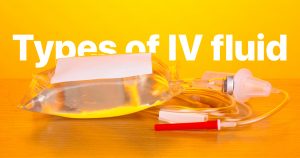
Next Generation NCLEX Items
What Are the New Test Item Types for NCLEX-NGN?
When the new NCLEX-NGN format officially begins in April 2023, licensure candidates will prepare for two new components of the examination:
- Three evolving case studies, each with six test items, that follow the NCSBN Clinical Judgment Measurement Model (NCJMM)
- A variety of test item types that evaluate the candidate’s ability to analyze a situation and use critical thinking skills to select the correct (key) response
NCLEX-NGN will continue to contain standard multiple-choice and select-all-that-apply (SATA) test items. The total number of test items will range from 85 to 150, just a few more than the current 75-145. This includes 15 questions that are being evaluated for future examinations, the same as before. A candidate may receive 52-117 stand-alone questions. With the 18 case study questions, total scored items will be 70-135. The test time remains five hours.
Here are the new test items for NCLEX-NGN Case Studies
Let’s go through the new types of test items, so you can become familiar with them. To make it easy to understand, we’ll use simple non-clinical examples to demonstrate how the items look.
Cloze (Drop-Down)
Similar to fill-in-the-blank, the candidate reads the text, then selects an option from one or more drop down boxes and drags it to the blank. If there is more than one, the blank and the drop-down box are appropriately numbered.
Key responses: Cloze 1:”Glad to meet you” and Cloze 2: Shake their hand.
NCLEX-NGN Evolving Case Study Steps that use Cloze test items:
- Recognize Cues
- Analyze Cues
- Prioritize Hypotheses
- Generate Solutions
- Take Action
- Evaluate Outcomes
Extended Drop and Drag
Similar to Cloze, the candidate drags their selection from an answer well (drop-down) to a blank. If there is more than one blank, candidate can move their selection to a blank that matches the color of the answer well.
Key responses: Answer well 1: an ocean resort, Answer well 2: warm, sunny weather and water sports
NCLEX-NGN Evolving Case Study Steps that use Drag and Drop test items:
- Recognize Cues
- Analyze Cues
- Prioritize Hypotheses
- Generate Solutions
- Take Action
- Evaluate Outcomes
Extended Multiple Response
Similar to the current select-all-that-apply (SATA) test items, but with more options for each question. The candidate may also be directed to select an exact number (N) of options.
Correct (key) responses are salamander, toad, newt, and frog. You might also see this test item as “Select 4 options.” If you try to select 5, you will be blocked after you have chosen 4 and will have to deselect an option before choosing another.
NCLEX-NGN Evolving Case Study Steps that use Extended Multiple Response test items:
- Recognize Cues
- Analyze Cues
- Prioritize Hypotheses
- Generate Solutions
- Take Action
- Evaluate Outcomes
Matrix multiple-choice
The candidate selects or unselects options by using radio buttons. If a radio button is already selected and the candidate decides to select another one, the first radio button becomes unselected.
Items have 4-10 rows, with 2-3 columns. The candidate must select 1 option in each row. The exam will not move to the next test item until all rows have a response.
| Color | Primary | Secondary |
|---|---|---|
| Red | ||
| Orange | ||
| Yellow | ||
| Green | ||
| Blue | ||
| Violet |
NCLEX-NGN Evolving Case Study Steps that use Matrix Multiple Choice test items:
- Recognize Cues
- Analyze Cues
- Generate Solutions
- Take Action
- Evaluate Outcomes
Matrix Multiple Response
The candidate reviews the text, then selects items that apply to each characteristic, condition, disease, or other category listed on each row of the question.
There can be 4 or more rows and 2-10 columns. Each row can have 0-all answers. Each column must have at least 1 answer.
| Walk | Bicycle | Automobile | Airplane | Ship | |
|---|---|---|---|---|---|
| Emits carbon dioxide | |||||
| Uses fossil fuel | |||||
| Powered by coal | |||||
| Active transportation |
NCLEX-NGN Evolving Case Study Steps that use Matrix Multiple Response test items:
- Recognize Cues
- Analyze Cues
- Prioritize Hypotheses
- Generate Solutions
- Take Action
- Evaluate Outcomes
Highlight (Enhanced Hot Spot)
Highlighting (Enhanced Hot Spot) asks for specific text based on the question. May be data, test results, or a passage that is critical. The candidate selects and highlights the text that corresponds to the question.
A nursing student is preparing for their NCLEX that is scheduled for two weeks away. Although the student has not performed well on several previous final exams, they are confident that the NCLEX will be “a slam-dunk” because “I know how to make the most of my study time.” They plan on cramming during a few all-nighters, relying on energy drinks to help them stay awake. When their friends offer to bring healthy meals from the dining hall, the student thanks them, but says, “I’ll just grab something from the vending machine when I feel hungry.” On the weekend before their NCLEX, the student decides to attend a concert in another state instead of studying. The night before NCLEX, they stay up until 3am in the student lounge while others watch a sport championship playoff, trying to learn medication and IV drip rate calculations. When the student shows up for their 8am appointment, they admit, “Maybe I should have planned better for this important examination.”
NCLEX-NGN Evolving Case Study Steps that use Highlight test items:
- Recognize Cues
- Evaluate Outcomes
Want more information?
NCLEX-NGN is going to include a new format that evaluates the candidate’s clinical judgment skills and ability to evaluate and act on available client data. It’s important to learn about evolving case studies and practice them before taking the licensure examination.
- Exam Preview
- Sample Questions
- NGN Tutorial
- Computer Adaptive Testing
- Clinical Judgment Measurement Model
Find out your chances by taking one of our practice tests.
Take a free test Reviewed by
Reviewed by 

